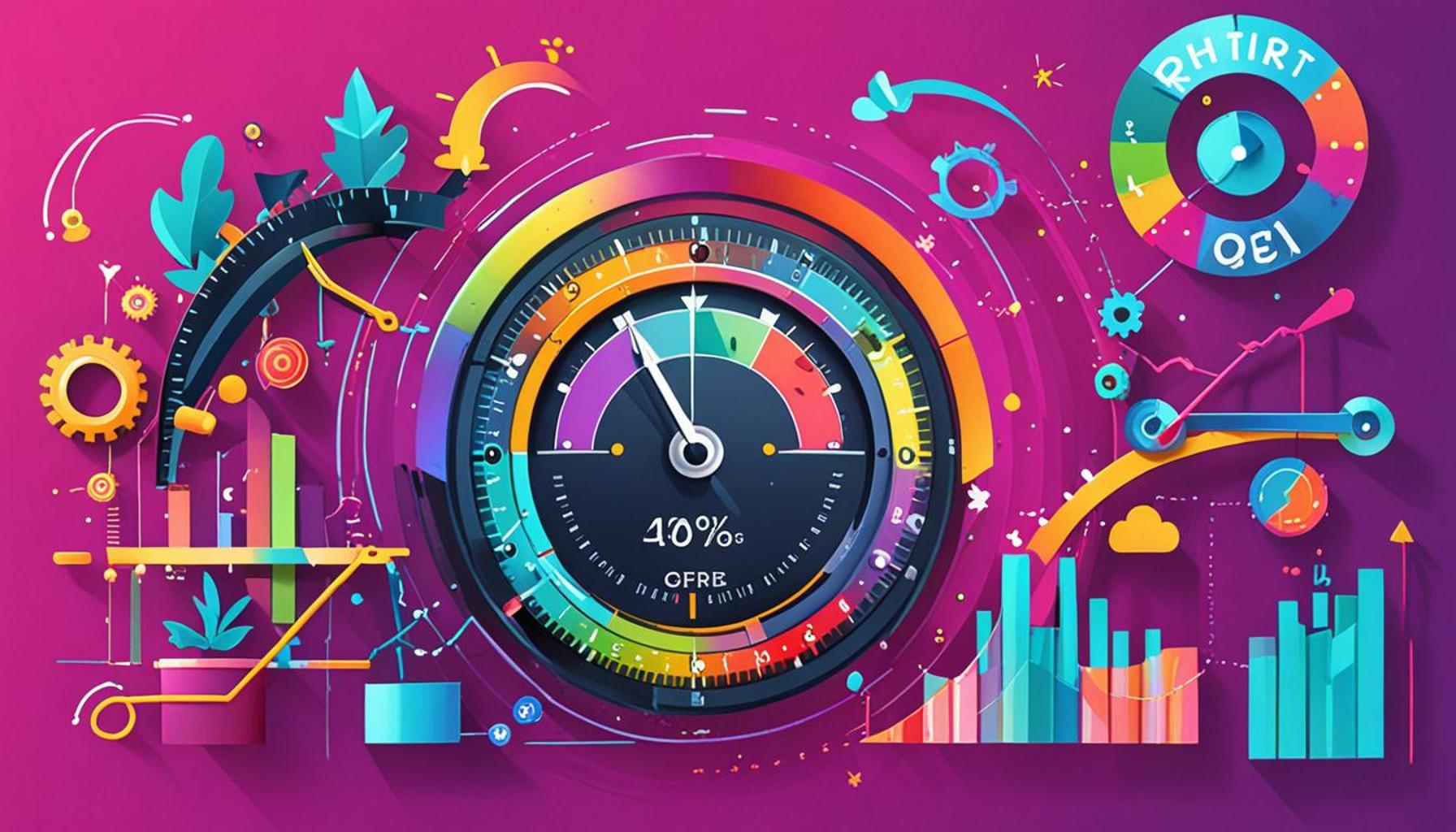Advanced Segmentation Strategies in Marketing Automation Campaigns

Understanding Advanced Segmentation
In the evolving landscape of marketing, employing advanced segmentation strategies is no longer just an option but a necessity for businesses aiming to connect authentically with their audiences. These strategies enable marketers to delve deeper than traditional demographics, utilizing data to create highly personalized experiences that drive real results. Advanced segmentation allows companies to analyze and categorize their customers based on intricate behaviors, preferences, and buying patterns, fostering stronger connections and encouraging customer loyalty.
Benefits of Advanced Segmentation
The benefits of utilizing these sophisticated segmentation techniques are manifold and can significantly enhance marketing efforts. For starters, increased engagement is a direct outcome of personalized content. When customers receive targeted messages that align with their interests, their likelihood to interact with the content skyrockets. Consider a company like Amazon, which uses browsing history to recommend products tailored specifically to individual users, resulting in higher click-through and engagement rates.
Moreover, segmentation leads to higher conversion rates. With targeted campaigns effectively addressing the needs and desires of specific audience segments, businesses can streamline their sales funnels. For instance, a clothing brand that segments its audience based on shopping behavior might promote exclusive offers just to frequent buyers, thus enhancing the chances of conversion.
Additionally, such practices support improved customer retention. By sending relevant communications that reflect a customer’s past purchases, interests, or engagement, businesses foster loyalty and build trust over time. For example, loyalty programs that acknowledge and reward repeat customers can create a sense of belonging, resulting in long-term relationships.
Exploring Targeted Strategies
To truly leverage the power of segmentation, marketers should consider employing a mix of different strategies tailored to their specific audience. Behavioral segmentation focuses on the actions of users—how they interact with a website, their buying behavior, and factors such as cart abandonment rates. This segmentation can guide a company’s email marketing strategy, allowing them to send reminders or special discounts to users who have left items in their carts.
Geographic segmentation is equally vital, especially for businesses that operate in multiple locations. Understanding regional preferences can help businesses craft localized marketing campaigns that resonate more effectively with an audience. For instance, a restaurant chain might emphasize its offerings that cater to local tastes during promotional events, significantly enhancing their local engagement.
Finally, psychographic segmentation dives into customers’ values, interests, and lifestyles, providing a profound understanding of their motivations. Brands like Patagonia excel at this by promoting environmental sustainability, aligning their marketing efforts with the core values of their eco-conscious customers.
Embracing advanced segmentation not only elevates marketing strategies but also positions businesses for long-term success in a competitive landscape. With tailored approaches, companies can transform how they connect with their audiences and achieve impressive results. Are you ready to explore these innovative tactics to enhance your marketing campaigns?
RECOMMENDED: Check out this similar article
Key Advanced Segmentation Techniques
To truly harness the potential of advanced segmentation strategies in marketing automation campaigns, businesses must adopt a multi-faceted approach that combines various techniques tailored to their unique audience. By understanding various segmentation dimensions, marketers can refine their strategies to optimize engagement and conversion effectively. Below, we explore some essential advanced segmentation techniques that can enhance marketing automation efforts.
1. Behavioral Segmentation
Behavioral segmentation is centered around consumer behaviors, including their interactions with brands, purchasing patterns, and level of engagement. This technique allows marketers to segment their audience based on actions rather than just demographics. For instance, e-commerce platforms can track customer journeys through their websites, identifying behaviors such as:
- Page views and time spent on specific products
- Items added to cart but not purchased
- Response to promotional emails or advertisements
Using this data, businesses can craft personalized messages, send reminders to customers who have abandoned their carts, or offer discounts on items they showed interest in, significantly boosting conversion rates. A study by HubSpot revealed that targeted behavioral emails have a 10% higher open rate compared to general promotional messages, underscoring the power of this segmentation method.
2. Geographic Segmentation
Geographic segmentation involves dividing audiences based on location, a critical factor in how consumers respond to marketing messages. For companies with a national or regional presence, employing geographical data ensures that marketing efforts resonate with local preferences and conditions. For example:
- A clothing retailer may promote winter apparel in colder states while highlighting summer collections in warmer regions.
- A restaurant chain could emphasize local cuisine or seasonal ingredients specific to each location.
By tailoring campaigns to the geographical context of their audiences, businesses can not only increase relevance but also enhance customer loyalty. According to research by Nielsen, localized marketing can lead to a substantial 25% increase in campaign effectiveness.
3. Psychographic Segmentation
Delving deeper, psychographic segmentation focuses on customers’ interests, lifestyles, values, and personalities. This approach yields a more nuanced understanding of consumers and their motivations, enabling brands to establish a meaningful connection with their audience. For example, brands that align with consumers’ values — such as sustainability or community involvement — are more likely to earn loyalty. Companies like TOMS leverage psychographic segmentation by promoting their commitment to social responsibility, which resonates with conscious consumers.
Implementing these advanced segmentation strategies not only enhances engagement and conversion rates but also provides invaluable insights into customer preferences. By creating personalized experiences driven by behavioral, geographic, and psychographic data, marketers can build stronger relationships with their audiences, ultimately leading to sustained business growth.
| Segmentation Method | Advantages |
|---|---|
| Demographic Segmentation | Targeting based on age, gender, and income levels allows marketers to tailor messages that resonate with specific groups, enhancing engagement. |
| Behavioral Segmentation | Analyzing user actions and interactions enables businesses to personalize offers and content, potentially increasing conversion rates significantly. |
| Psychographic Segmentation | Understanding consumers’ lifestyles and values offers rich insights for developing emotionally engaging campaigns that go beyond basic demographics. |
The power of advanced segmentation strategies in marketing automation campaigns lies in the ability to dive deeper into consumers’ preferences and behaviors. With demographic segmentation, companies can capture vital data on their target audience, allowing for messages that speak directly to their interests and needs. Behavioral segmentation, on the other hand, harnesses the power of data analytics to track user actions, fostering connections that enhance the customer journey.Marketers who leverage psychographic segmentation create campaigns that resonate on a personal level, leading to higher brand loyalty. The integration of these strategies not only enhances targeting precision but also generates greater ROI. As industries evolve and competition intensifies, adopting these advanced techniques is essential for businesses aiming to elevate consumer engagement and satisfaction in their marketing automation efforts.
LEARN MORE: This related article may interest you
Leveraging Data-Driven Insights for Precision Targeting
In the dynamic realm of marketing automation, leveraging data-driven insights for segmentation is crucial for creating personalized customer experiences. By utilizing advanced data analysis techniques, marketers can uncover hidden patterns and preferences within their audience. The following methods illustrate how to enhance precision targeting through segmentation.
4. Value-Based Segmentation
Value-based segmentation categorizes customers based on the economic value they provide to the business. Recognizing high-value customers allows marketers to focus their efforts on retaining and nurturing these segments. For instance, companies can use customer lifetime value (CLV) analysis to identify individuals who not only make frequent purchases but also spend significantly over time.
In practice, a SaaS provider could segment users who have high retention rates and premium subscription upgrades and target them with exclusive offers or advanced product features tailored to their needs. This targeted approach can lead to increased upselling opportunities and a greater overall return on investment (ROI). According to a report from Bain & Company, increasing customer retention by just 5% can lead to a profits increase of 25% to 95%, emphasizing the importance of retaining high-value customers.
5. Occasion-Based Segmentation
Occasion-based segmentation refers to targeting customers based on specific occasions or events that prompt purchasing behavior. This technique is prevalent in industries where timing significantly influences consumer actions, such as retail and hospitality. Businesses can tap into special occasions—including holidays, birthdays, or seasonal sales—to create campaigns that resonate with their audience during these specific times.
For instance, a jewelry retailer may offer special discounts or personalized promotions to customers around anniversaries or Valentine’s Day. Similarly, hotel chains can target families planning summer vacations with tailored packages that highlight kid-friendly amenities. According to a study by Epsilon, personalized emails based on occasions can increase transaction rates by 20% to 40%, showcasing the potency of occasion-based messaging.
6. RFM Segmentation (Recency, Frequency, Monetary)
RFM segmentation is a powerful method that analyzes three key metrics: recency, frequency, and monetary value. By understanding how recently a customer made a purchase, how often they buy, and how much they spend, businesses can segment their audience into actionable categories. For example:
- Recent buyers can be targeted with loyalty rewards to encourage repeat purchases.
- Frequent buyers might receive exclusive access to new products.
- High-spending customers could be engaged with premium content or personal concierge services.
This nuanced segmentation allows marketers to develop tailored marketing strategies that cater specifically to each segment’s value and behavior. Research by McKinsey has shown that brands using RFM analysis tend to boost their email responsiveness significantly, increasing conversions by up to 30%.
Incorporating these advanced segmentation techniques into marketing automation campaigns enables businesses to develop a deeper understanding of their customers, ensuring that communication tactics align with specific audience needs and preferences. The outcome is improved engagement, increased loyalty, and optimized marketing spend—a recipe for success in today’s competitive digital landscape.
RECOMMENDED: Check out this similar article
Conclusion: Unlocking the Potential of Advanced Segmentation
As the digital marketing landscape becomes increasingly competitive, employing advanced segmentation strategies in marketing automation campaigns is no longer optional; it is essential. The ability to analyze customer data and categorize audiences into meaningful segments allows marketers to craft tailored messages that resonate with their target audience. Techniques such as value-based segmentation, occasion-based segmentation, and RFM segmentation provide the tools necessary to enhance engagement, foster loyalty, and ultimately drive conversions.
In today’s environment, where consumers are inundated with generic messaging, leveraging data-driven insights is key to standing out. Understanding customer behaviors and preferences enables businesses to create relevant campaigns that not only capture attention but also facilitate lasting relationships. By effectively targeting high-value customers and capitalizing on pivotal moments in their purchasing journey, companies can increase retention rates and maximize their return on investment.
As we move forward, the continual evolution of analytics tools will further empower marketers to refine their strategies. This adaptation will ensure that businesses remain not just competitive, but also innovative in their approach. For those seeking a competitive edge, diving deeper into the world of advanced segmentation may unveil new opportunities for growth and customer satisfaction. It is imperative to not only adopt these strategies but to constantly analyze and optimize them to meet the changing tides of consumer behavior. The future of marketing automation lies in precision; let us embrace it fully to unlock unparalleled potential.


